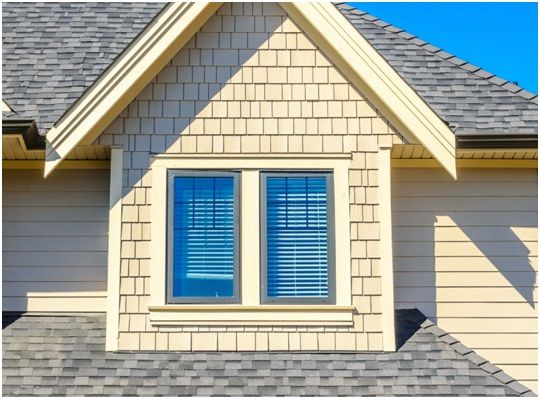Selecting A Window Material: Wood
Historically, only wood windows were available in color/paintable. Wood is still the best option if you like to mix up your color scheme, as they can be scraped/sanded and repainted again and again.
For wooden windows, we work with Andersen and Marvin. Both companies offer stock colors as well as custom paint colors, and they can also be ordered primed and painted onsite. As a rule of thumb, however, remember that a factory paint job will hold up better than windows painted on site.
Finally, one cost saving tip when working with colored windows is to pick a stock color (non-custom), and base your color scheme around that.
Selecting A Window Material: Vinyl
A more economic alternative to wood windows can be found in Sunrise Vinyl Windows. These windows also come in stock colors or custom, but they must be factory finished. It is not advisable to field paint vinyl windows.
For that reason, Sunrise is a great option for those willing to commit to a window color for the long haul. Be advised, though, that this can be a double-edged sword: on one hand, windows will not require costly paint maintenance; on the other hand, you will have to live with that color for 20+ years.
Selecting A Color Scheme and Design
Carefully designing a color scheme is an important step in making the most of your renovation. There are a number of color scheme frameworks to consider, and they all produce a different look or style:
- A monochromatic color scheme, where your homes siding, trim, and accents are all one color is a traditional colonial look. While it has fallen out of fashion now, it still produces a very charming result.
- An analogue color scheme is created by selecting 2 or three different shades of a similar color for your base, trim, and accent. This is more commonly thought of as a “shades of…” color scheme, such as shades of neutrals, shades of blues, etc. This is still a traditional look, but it looks more deliberate than other options. Taking the time to select complimentary shades that work together to produce a great look makes your home look more custom and more luxurious.
- A complimentary color scheme is one which makes good use of a color wheel. Two colors opposite each other on the color wheel are called compliments, and traditionally look very good when mixed. For example, in Victorian design often a yellow home will be given purple trim to add punch and contrast
- A dichromatic color scheme where only two colors are used is probably most popular today. A classic example of this is the ever popular modern farm house style. Crisp white walls and trim are grounded by black windows which add the modern flair customers are looking for. Other examples of a dichromatic color scheme would be when walls are painted one color, and trim and windows are painted another. This produces a homey, cottage-like effect, adding charm and warmth.
Final Thoughts
These are just some options, and one should consider their home’s architecture when selecting a color scheme. Often customers feel they need to work with a color consultant, which is a great option if you have the extra cash; however, we can offer complimentary color design with your window project to ensure our customers get the most out of their project. Give us a call today at (973) 857-1555 to see how we can help!

